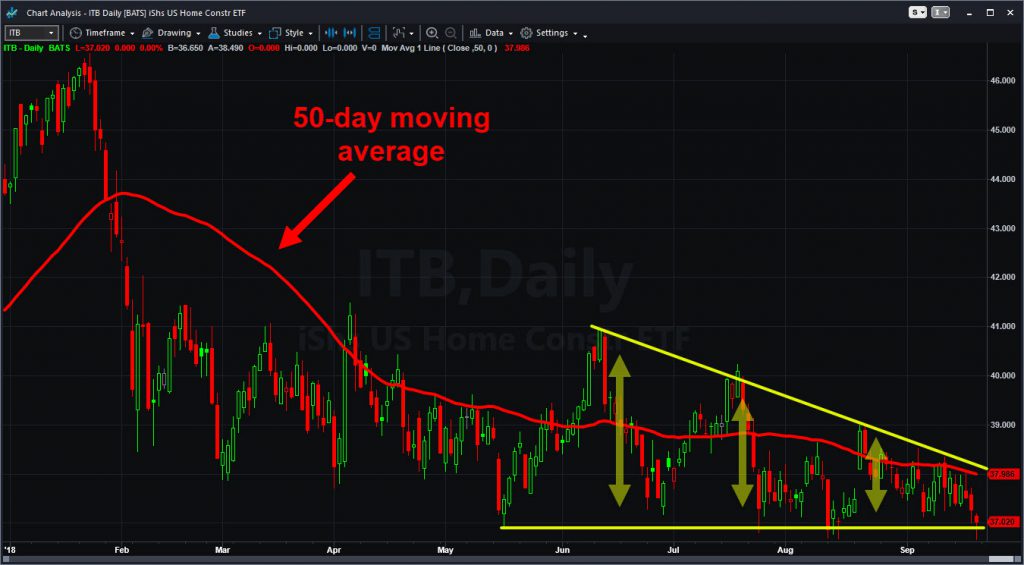Stocks kept climbing last week as fears of a trade war morphed into fear of missing out.
The S&P 500 rose 0.85 percent between Friday, September 14, and Friday, September 21. It was the tenth gain in the last 12 weeks, and keeps the index on pace for its sixth consecutive positive month.
But, who cares about the S&P? Let’s talk about the Dow Jones Industrial Average, which ripped 2.2 percent to a new all-time high. That made it the last of the major indexes to escape from the range created by February’s sharp selloff.
The breakout came after the tariffs between Washington and Beijing proved less punitive than feared. That allowed investors to bargain-hunt global stocks, especially as the U.S. dollar slid to its lowest level since early July.
Other economic news was neutral-to-positive: Jobless claims fell to a new 49-year low, but housing continued to limp. Manufacturing indexes from the Philadelphia and New York branches of the Federal Reserve were mixed.
Stocks associated with risk-taking and growth led the gains last week: Financials, materials, emerging-markets and energy. Safe-haven bonds and real-estate investment trusts fared the worst as interest rates climbed.
Those higher borrowing costs and an array of J.P. Morgan downgrades weighed on housing. Is the U.S. Home Construction ETF (ITB) at risk of breaking down through the bottom of its current range?

Software companies pulled back from highs thanks to a second-consecutive weak quarter from Red Hat (RHT). Domestic-focused small caps also struggled as investors shunned their high valuations.
Cannabis stocks swung wildly last week. Click here for more.
Despite sighs of relief toward global stocks, retailers fell into the end of the week after Wal-Mart Stores (WMT) and Target (TGT) said tariffs would result in higher prices.
A pair of insurers, Brighthouse Financial (BHF) and Unum (UNM) were the best performers in the S&P 500. Both rallied from long-term lows despite a lack of news.
Used-car broker Copart (CPRT) led to the downside with a 19 percent drop, and RHT declined 10 percent. Both were hurt by poor quarterly results or guidance.
This week brings an end to the third quarter, a Fed meeting and some other noteworthy events.
Today, for instance, sector indexes undergo a big reshuffling. E-commerce, telecom and video-game companies will be removed from Technology (XLK) and reassigned to Communication Services (XLC). Media companies also migrate from the Consumer-Discretionary ETF (XLY) to XLC.
Tomorrow brings consumer confidence and Nike (NKE) earnings.
Wednesday’s dominated by the Fed, which is expected to increase its key interest rate by 25 basis points. Crude-oil inventories and new home sales are also due.
Thursday features durable-goods orders, initial jobless claims and the final revision of second-quarter economic growth.
The week concludes with personal income and spending Friday morning.


























